This wasn't a case of reckless destruction; Hunt was trying to save his land.
Over the years, his ranch in Humboldt County, California, which has been in his family for four generations, has grown less pristine. Invasive grasses and conifers have encroached, taking over the space of the oaks and prairie and leading to a thick buildup of plants, making the land particularly vulnerable to wildfires.
In an effort to safeguard the land, Hunt, along with his Humboldt County neighbors, have turned to a practice called prescribed burning. The strategy ― which has its roots in natural processes and indigenous practices ― involves setting small, controlled fires that are just enough to burn the dense, smaller vegetation that can act like kindle for catastrophic wildfires.
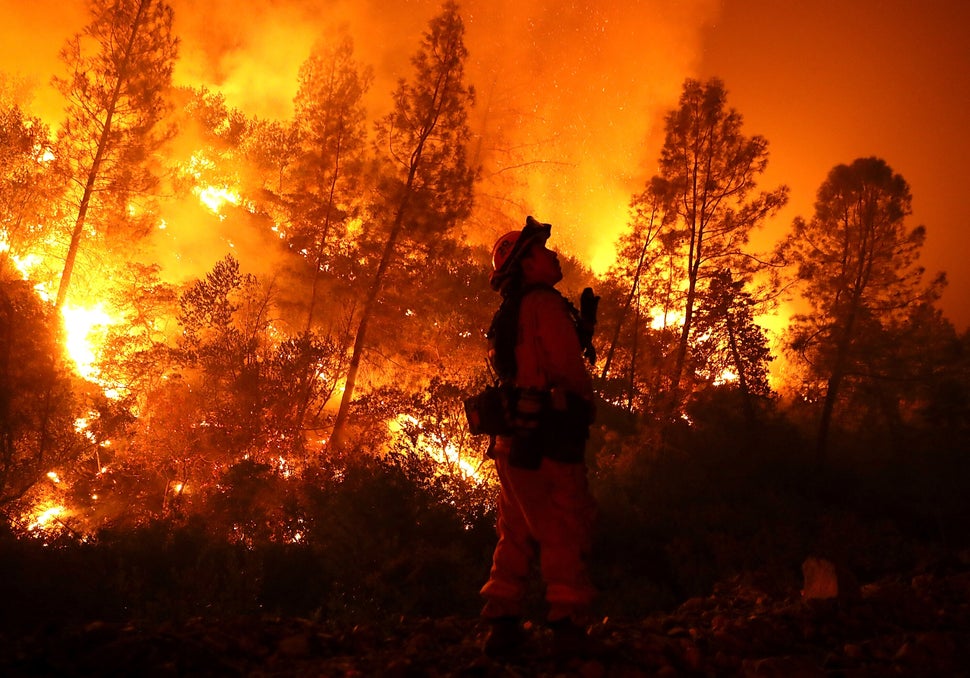
Humboldt County has been lucky so far. California's northern stretch of redwood forest, lush mountains, and wide valleys has been mostly untouched by wildfires. But the warming planet has left the land hotter and drier than usual, turning it into the perfect kindling, and there's nothing to say a place like Humboldt ― 70% forested ― will remain free from disaster.
A year ago, the Mendocino Complex Fire erupted in the county bordering Humboldt to the south, quickly growing into the largest fire in California's modern history. A few months later, the Camp Fire flattened the town of Paradise, just over 200 miles from Eureka, the county seat of Humboldt.
"There was fire happening all around us," said Tracy Katelman, a community wildfire expert who lived in Humboldt County until February. This is particularly scary in a county with unreliable cellphone service, old flammable houses, a lack of signs, and dirt roads leading to isolated homes — only one way in, one way out.
The scale of the wildfires ripping through the state, Katelman said, prompted her neighbors to start saying, "Holy shit, that could happen here … how are we going to get ready for that?"
The answer they landed on is prescribed burning, both to make the land more resilient to fire and to bring the community together. It's not a guarantee. It doesn't end all fires, but it does mitigate the ever-growing potential for catastrophic ones.
"It's a simple premise," said Lenya Quinn-Davidson, a local resident and fire ecologist at the University of California Cooperative Extension. "Neighbors helping neighbors."
In 2018, Quinn-Davidson, her colleague Jeffrey Stackhouse and their neighbors formed the Humboldt County Prescribed Burn Association, which now has 85 members. The first organization of its kind in the Western U.S., it pools together supplies (drip torches, weather monitors, fans to suppress the fire) and trains anyone interested in how to safely apply fire to the landscape in order to save it.
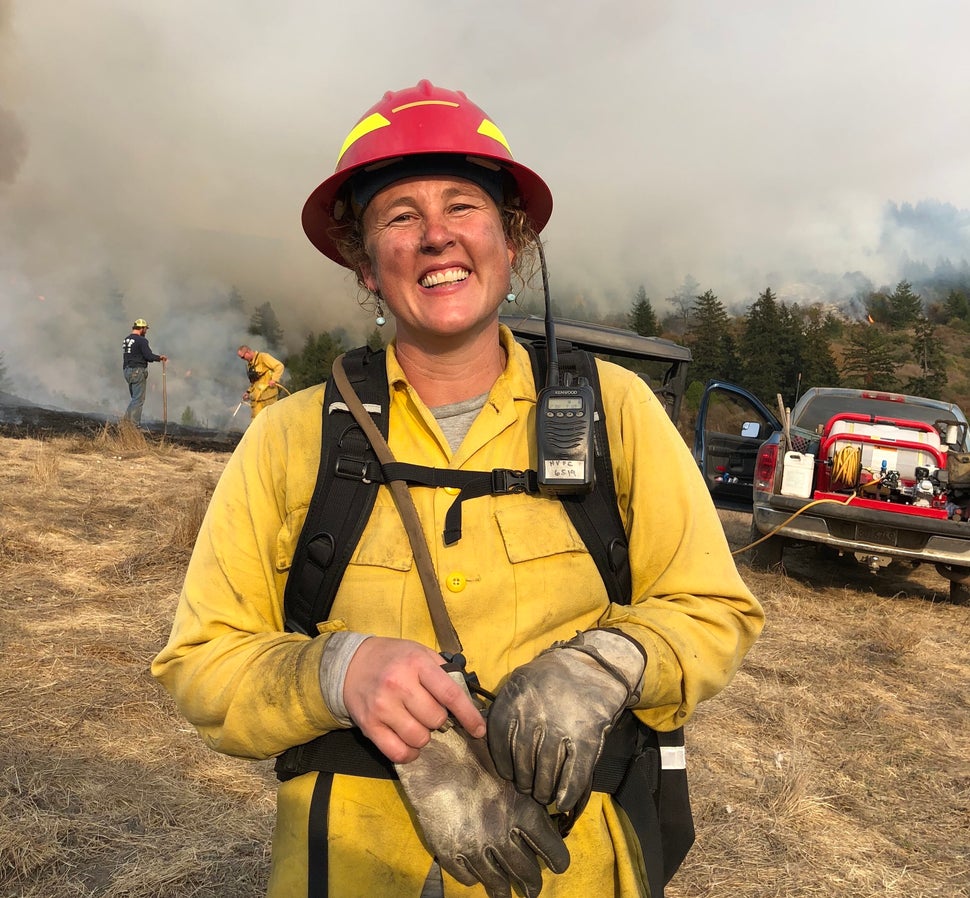
To date, they have burned a total of 1,022 acres on private land, which would have otherwise remained highly vulnerable to wildfire.
After a burning session, they often throw a potluck. "You have people from different parts of the community that would never be together ― you have ranchers and then you have old hippies," said Quinn-Davidson. "It's just everyone working together and sharing experiences."
Conducting a prescribed burn essentially comes down to understanding fire behavior, then controlling it. "There's a real art," said Quinn-Davidson. For instance, burning in lines running parallel to the slope, Quinn-Davidson explained, causes the fire to burn less intensely, while burning in lines vertical to the slope, from the bottom-up, causes it to burn hot and fast.
Weather is also key. When burning grass, the weather needs to be dry and sunny ― even a cloud blocking the sun might hinder the burn. Woodland oaks, on the other hand, burn best on the middle of winter, especially after a freeze that saps the moisture from the trees, explained Quinn-Davidson.
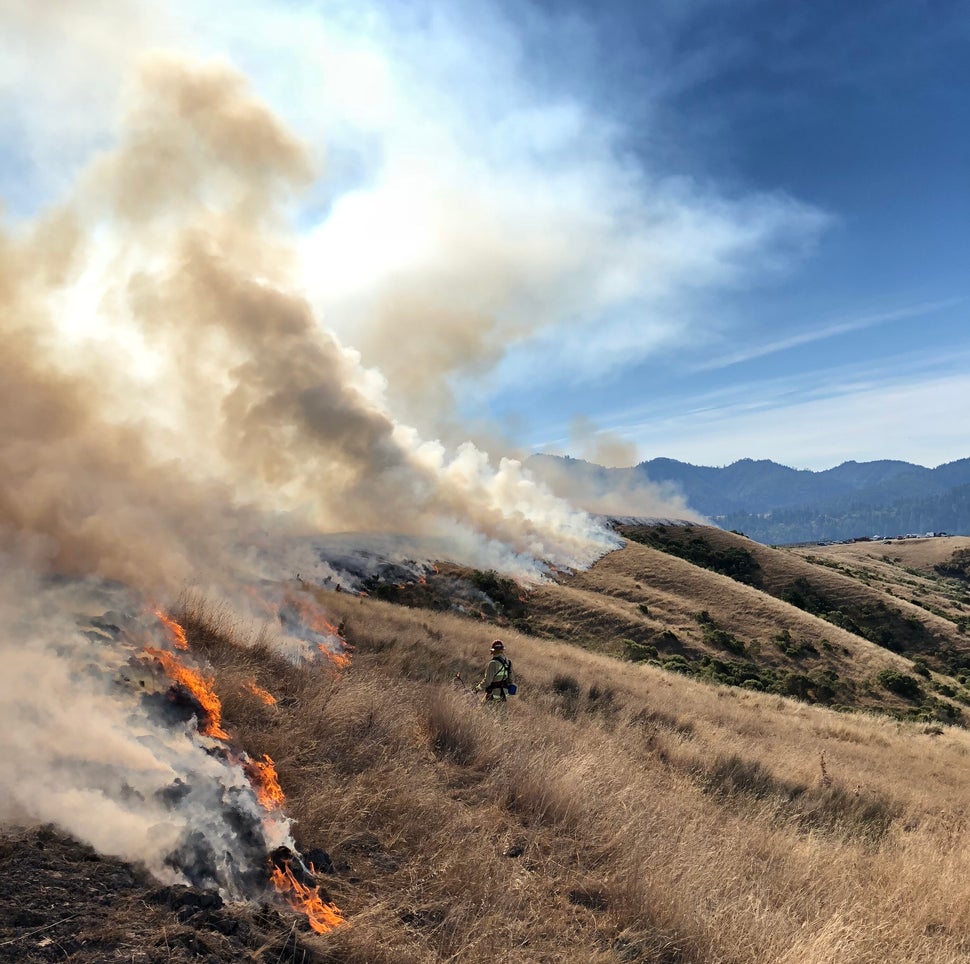
Before starting a burn, the burn team will set a "control line," typically consisting of bulldozed areas, roads, and existing trails, which mark the area and act as the boundary to the fire by giving it nothing to feed. Then they'll do a "test burn" to see if the fire is behaving as they expect. "Sometimes it's not burning hot enough and we'll decide to hold off until it's drier," said Quinn-Davidson.
Throughout a burn, the team will work to both stoke and curb the fire. If the fire begins to peter out, they can apply more of the drip torch. Sometimes they'll get "slop over," fire that goes outside the control line. "You can easily put it out," said Quinn-Davidson. Other times, an ember blows outside the boundaries and starts a small fire, known as a spot fire. "Again, that's not a huge deal," Quinn-Davidson said.
To date, the Humboldt County Prescribed Burn Association has never had a fire "escape" and have to call in additional resources to help put it out. That doesn't mean it won't happen.
"No amount of preparation will completely eliminate the element of risk of prescribed fire," said Kurt McCray, chief of Humboldt-Del Norte Cal Fire Unit of the California Department of Forestry and Fire Protection. "But the benefits far outweigh the potential of losing control of the fire."
These benefits are not only about wildfire resilience. By clearing out the more flammable, invasive vegetation, small, controlled fires can boost biodiversity. One study, conducted in the Sierra Nevada region of northern California, found that a decade after a prescribed burn, there were twice as many native plants as on non-burned land.
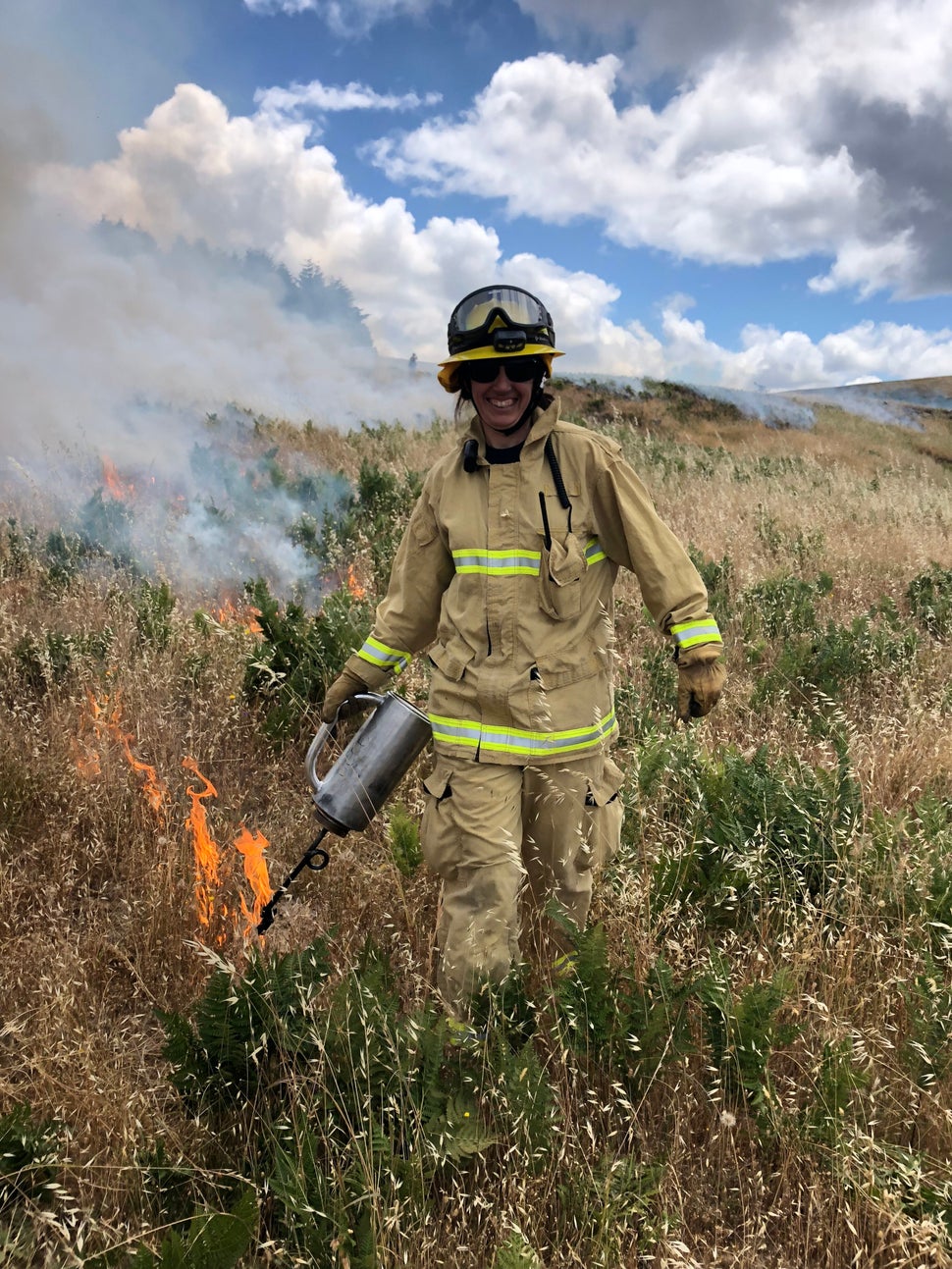
The idea of applying fire to Humboldt's landscape is not new. The Karuk, Hupa and Yurok tribes, whose indigenous land is partially in Humboldt, have conducted burns for millennia, helping the landscape adapt to fire.
They were forced to abandon this practice after the 1910 Great Fire, which burned 3 million acres across Idaho and Montana and killed 86 people. In the aftermath, the National Forest Service implemented fire suppression policies, which made controlled fires illegal in public forests.
"Out of this wreckage came state-sponsored conservation, which seized on fire as the most visible and politically potent emblem of what was wrong," wrote environmental historian Stephen Pyne in a 2018 report on prescribed fire.
While the Forest Service's approach to fire softened in the late '60s, the legacy of this policy remains in the dangerous, dense buildup of vegetation in much of the country.
Some states, like Florida and Oklahoma, have incorporated prescribed burns into forest management since the rules were loosened, but the Western U.S. has lagged behind.
There is slow movement, though. In September, California passed a suite of bills promoting the use of prescribed burns on public and private lands. The legislation also supports the development of new, statewide certification for "burn bosses," which would train fire professionals to lead prescribed burns.
"It's a significant shift because the policy of the state for many years has been to just let the vegetation grow and controlled burns have been the disfavored approach," said state Sen. Hannah-Beth Jackson (D), who drafted the legislation.
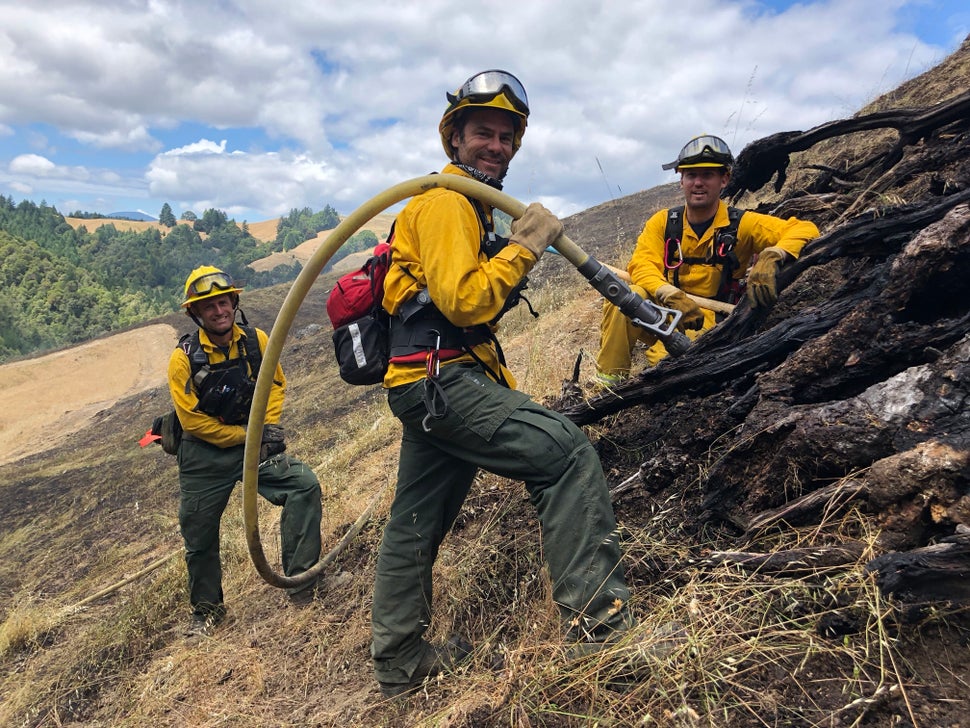
Part of the reason prescribed burning has been overlooked is the false perception that it wouldn't be suitable for California. "One of the main things I hear from folks is: 'Well, that would work in Texas. That would work in Oklahoma ... but that would never work in California,'" said Quinn-Davidson.
But many of California's diverse landscapes have evolved with fire ― and still require it today. "California is a fire-adapted state," explained Quinn-Davidson. "The landscape needs fire to persist. The forests need fire. The woodlands need fire. The grasslands need fire."
Support is growing, however. Fire safety councils, community-based organizations dedicated to fire preparation, are active across California, and prescribed burn associations like Humboldt County's are quickly gaining momentum, with one in Plumas County and another in Sonoma County.
Humboldt is integrating prescribed burns into the county's wildfire planning. In January, the county updated its Community Wildfire Protection Plan, which calls for scaling up prescribed burns: 5,000 acres on private land and 6,000 acres on public land every year.
As support has grown for prescribed burns, native tribes have been able to finally reclaim their practice. The Karuk Tribe in Humboldt County has established partnerships ― with nonprofits as well as state and federal agencies ― for larger-scale burns, said Bill Tripp, deputy director of cultural revitalization at the Karuk tribe's Department of Natural Resources.
Last June, the Karuk tribe signed onto a plan to burn 5,570 acres near Somes Bar, California ― a pilot project to be conducted with the Forest Service, as Wired reported.
"So many people ― prescribed fire practitioners, fire ecologists, research managers and tribes ― are all getting together and using all of their network connections to say, 'Hey, we need to do this. This is our solution,'" said Tripp.
Prescribed burns work best when as many people as possible burn on their land, taking a small risk to build collective immunity for the entire region against wildfires. When proper safety precautions are taken, that risk is especially low.
"Fire is the most cost-effective and efficient force management tool we have," said Cal Fire's McCray.
Of course, there's always a chance that something might go wrong, that an ember, picked by the wind, could spread faster than intended. But it's a flicker of risk compared to the risk of devastating wildfires the country is up against.
--
Groups.io Links:
You receive all messages sent to this group.
View/Reply Online (#31981) | Reply To Group | Reply To Sender | Mute This Topic | New Topic
Your Subscription | Contact Group Owner | Unsubscribe [volcanomadness1@gmail.com]


No comments:
Post a Comment